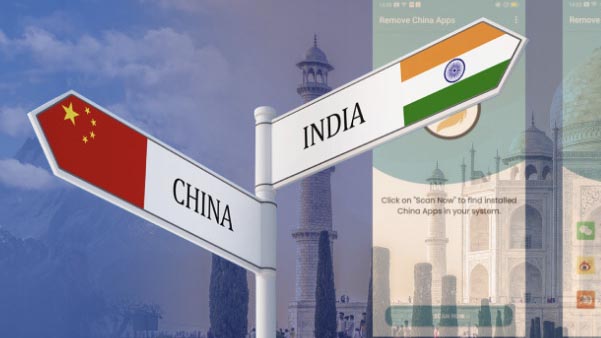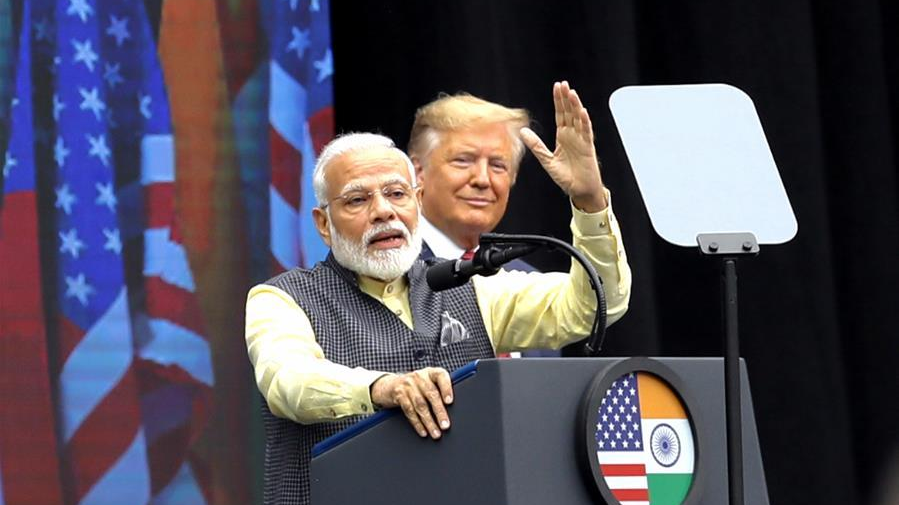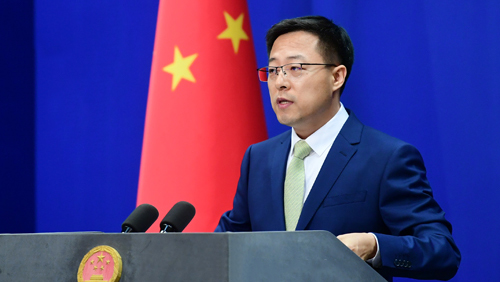
A fierce physical fight broke out between the Chinese and Indian border guards after the latter illegally crossed the Line of Actual Control (LAC) in the Himalayas and deliberately launched provocative attacks on the night of June 15, thereby causing casualties on both sides. This is the most serious border conflict between the two countries in recent years, with the Hindustan Times, an Indian media outlet, describing it as "the deadliest border clash since 1975."
Tensions have been escalating with skirmishes between the two sides since the beginning of May till the month's end when diplomatic talks began. In the beginning of June, after top military officials from the two countries held a high-level negotiation on the matter, soldiers on both sides of the LAC pulled back to de-escalate the situation. The talks went on for several rounds to calm the situation further. However, the Indian military later launched another attack.
This development reminds one of the times when the two countries confronted each other at the Doklam Plateau for two months in 2017, almost triggering an armed conflict.
The continuous border tensions reflect that India may have made a strategic miscalculation. India seems to have great confidence in the United States' theory of an "Indo-Pacific" strategy, advertised by U.S. Secretary of State Mike Pompeo in his 2018 speech as: "The American people and the whole world have a stake in the Indo-Pacific's peace and prosperity."

Indian Prime Minister Narendra Modi addresses the "Howdy, Modi!" rally along with U.S. President Donald Trump, Houston, Texas, the U.S., September 22, 2019. /Xinhua
Indian Prime Minister Narendra Modi addresses the "Howdy, Modi!" rally along with U.S. President Donald Trump, Houston, Texas, the U.S., September 22, 2019. /Xinhua
The narrative goes on after Pompeo's ambitious speech as Leigh Hartman, foreign policy writer at the U.S. Department of State, explores the nature of "the U.S.'s Indo-Pacific strategy" in his article, essentially identifying that it is a strategy owned and introduced by the United States, including its military support to India known as "from Hollywood to Bollywood."
Since the breakout of the COVID-19 pandemic, India may have noticed that the current relationship between the U.S. and China has deteriorated. Therefore, Indian officials think that China will not dare to engage in a conflict with India, but they seem to have underestimated China's determination to defend its territory.
Chinese political and military officials have said on many occasions: "China has the firm resolve and ability to safeguard national sovereignty and territorial integrity, and will never allow the secession of any part of its territory by anyone, any organization or any political party by any means at any time." This statement is not limited to the country's resolve to defend Taiwan and Hong Kong Special Administrative Region, but also includes Xinjiang Uygur Autonomous Region and Tibet Autonomous Region.
India may have noticed that after the recent border conflicts, although Zhang Shuili, spokesman for the Western Theater Command of the People's Liberation Army (PLA), urged the Indian side to "strictly restrain their frontline troops," the Chinese defense minister did not say a war has started.
It was Chinese Foreign Minister Wang Yi who had a telephone conversation with his Indian counterpart to show that China would use diplomatic talks in stead of military means to resolve the border conflict.
Wang suggested that China and India should strengthen communication and coordination on properly addressing the border situation and jointly maintain the peace and tranquility in border areas.

Chinese Foreign Ministry spokesperson Zhao Lijian states China's position on the border issue from Beijing, China, June 17, 2020. /Xinhua
Chinese Foreign Ministry spokesperson Zhao Lijian states China's position on the border issue from Beijing, China, June 17, 2020. /Xinhua
This is the responsible way of dealing with conflicts. The Indian side must not misinterpret it as cowardice on China's part.
First, it is an act of willingness to talk peacefully with a country that is similar to China in terms of a large population and a developing-country status.
This is reflected by what Wang said in his conversation with Indian External Affairs Minister S. Jaishankar: "China and India, both emerging powers with a population of over one billion, bear the historic mission of accelerating their own development and rejuvenation. Hence, acts of mutual respect and mutual support are on the right track and conform to the long-term interests of both countries."
Second, India must learn that neither side wants a war. Before India goes to war, it needs to carefully evaluate its standing and understand that its military might is not at par with China's.
Third, as highlighted by Sun Tzu, a famous Chinese ancient military officer, to attack the enemy's army should be the last resolution of border issues. He said in his masterpiece The Art of War: "The highest form of generalship is to balk the enemy's plans, the next best is to prevent the junction of the enemy's forces, and the next in order is to attack the enemy's army in the field." But in this case, India is not even an enemy. It should be China's partner in serving the mutual interests of the people.
China and India are neighbors. "I must not serve a distant neighbor at the expense of the nearest," said Mahatma Gandhi, the famous Indian anti-colonial non-violent leader.
On the China-India border, soldiers from both sides celebrated New Year together in 2014. Six years have passed, and the two countries should get closer. Both countries should do more things together to strengthen the bond, and avoid decoupling of the relationship. Neighbors should move forward, not backward.
(If you want to contribute and have specific expertise, please contact us at opinions@cgtn.com.)